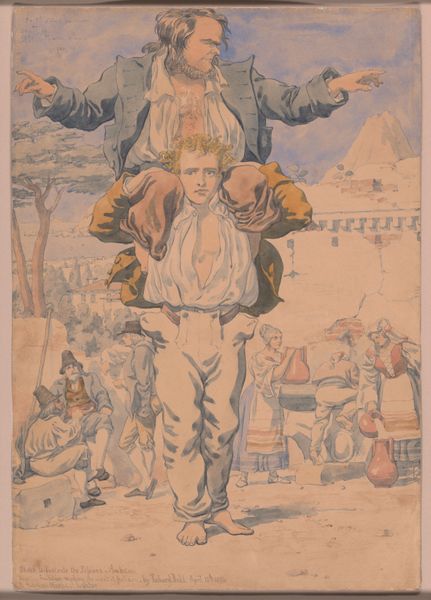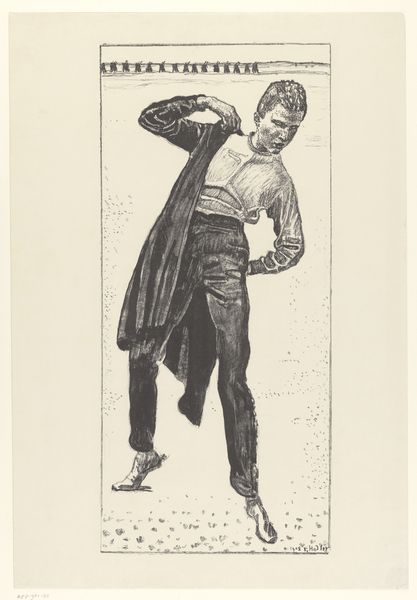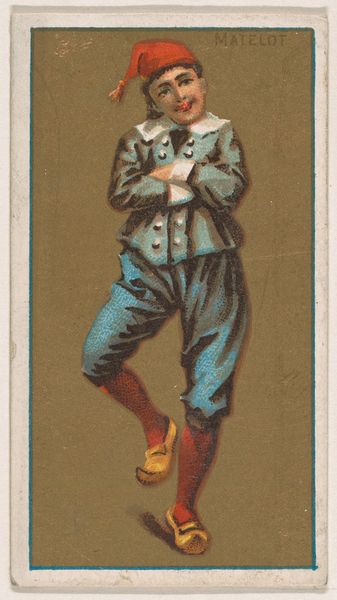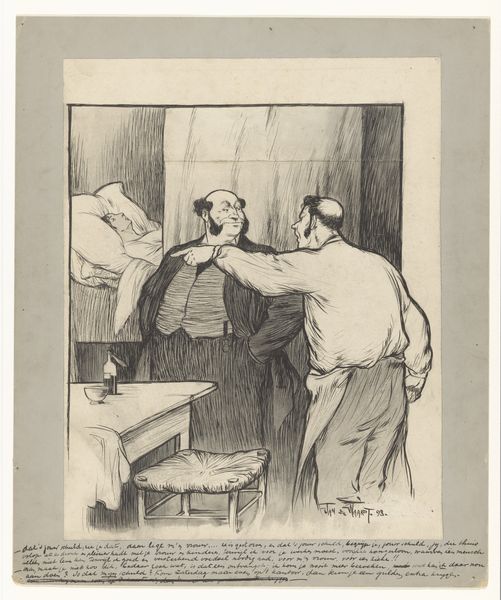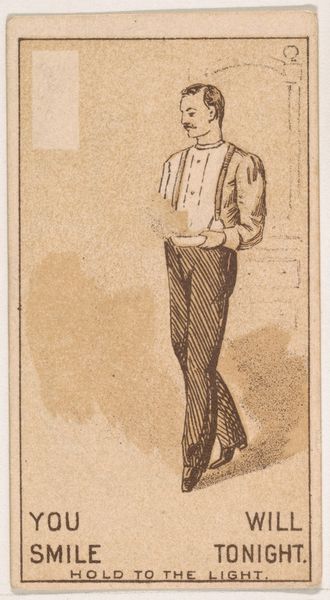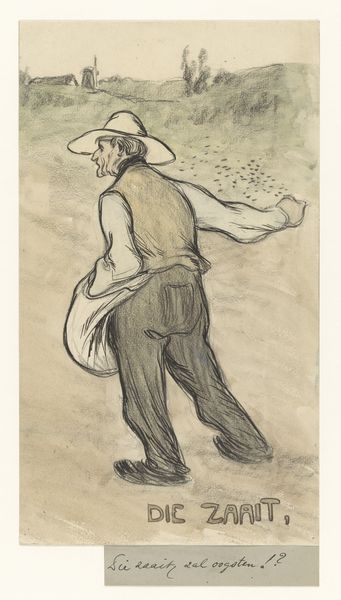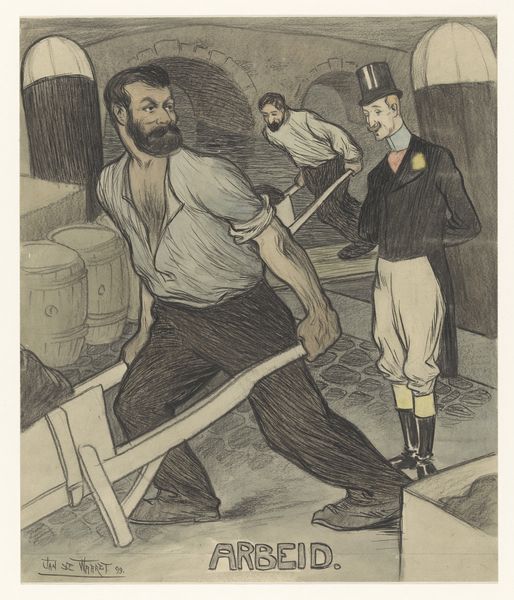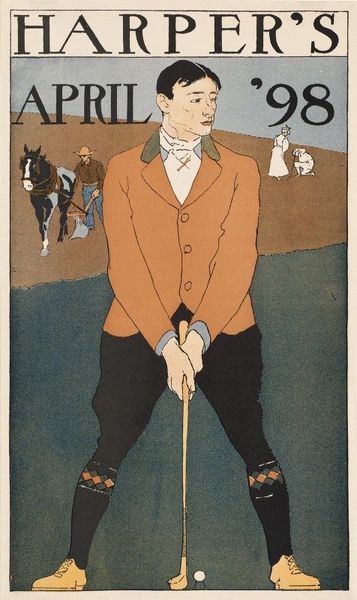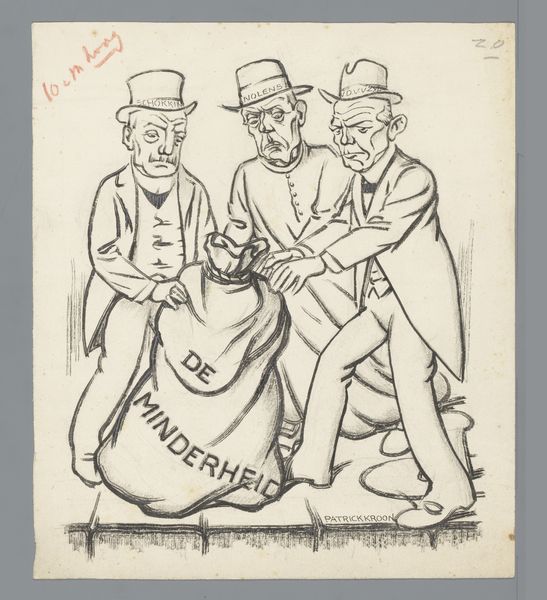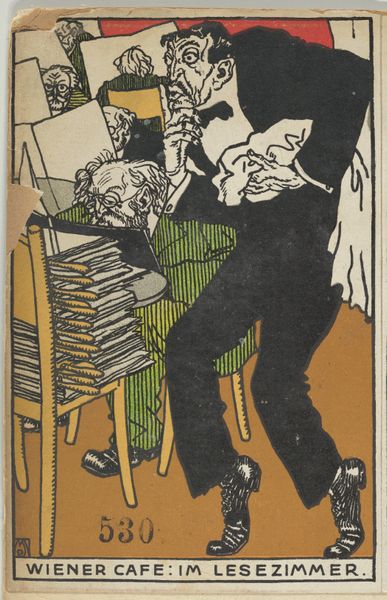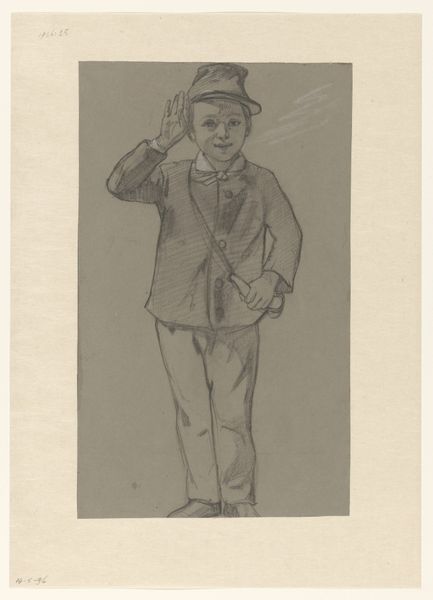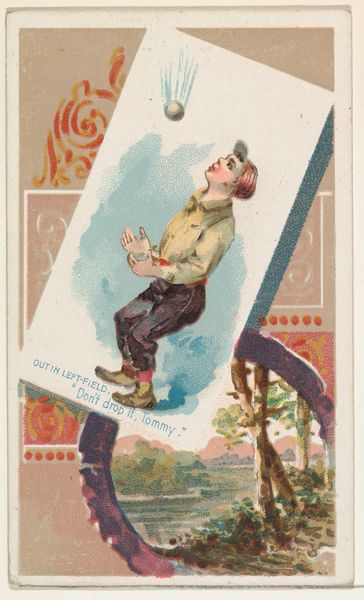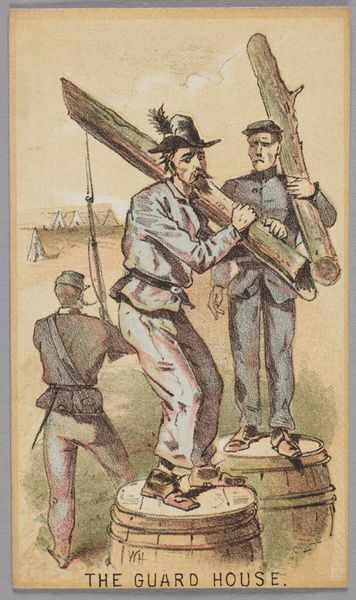
drawing, paper, pencil, charcoal, poster
#
portrait
#
drawing
#
narrative-art
#
paper
#
pencil drawing
#
coloured pencil
#
pencil
#
charcoal
#
poster
#
modernism
Dimensions: length 110.5 cm, width 75 cm
Copyright: Rijks Museum: Open Domain
Curator: Okay, let's turn our attention to Willy Sluiter's work, believed to be from around 1918, a drawing rendered with pencil, charcoal, and coloured pencil on paper; its title roughly translates to "Sowing Rye or Wheat." You'll find it residing here at the Rijksmuseum. What's your initial take? Editor: Earthy. Melancholic. I get the sense of stoicism from the lone figure… almost severe, you know? The colors are muted, humble even, which gives it this raw, almost photographic feeling. Curator: Indeed. Sluiter's visual language is heavily steeped in the period’s sociopolitical landscape. We see this man, almost a symbol of the Dutch agricultural workforce. He becomes an icon for discussions surrounding labor, class, and even national identity during a tumultuous time in European history, as wartime scarcity was very topical. Editor: It’s amazing how he captures that weight, isn’t it? That weight of expectation, the sheer graft… but it's not romanticized. It’s real. The deliberate mark-making contributes, I think. It reminds me a bit of those FSA photographs from the American Dust Bowl era. Curator: Precisely. And when we delve into the choices, using earthy pigments in his colour pencil, it's evident Sluiter deliberately avoids idealizing his subject. Instead, he seeks a raw, unfiltered representation, inviting dialogues on rural livelihoods. Also interesting that, despite using various techniques, the image holds very tight to almost a poster aesthetic with very direct lettering. Editor: Yeah, it’s that directness which pulls me in. A message in art! What do you think the overall mood it sets is? Curator: Its success as a cultural object is that the artist speaks on national fortitude; it presents conversations that intersect with socioeconomic stability and perhaps an emergent sense of a national reawakening, particularly after WWI. Editor: Agreed. Looking at it again, that severe figure dispersing a sprinkle of grain feels a little like how we attempt solutions; sometimes meagre but delivered with resolution. I have a lot of admiration for what this piece says!
Comments
No comments
Be the first to comment and join the conversation on the ultimate creative platform.
